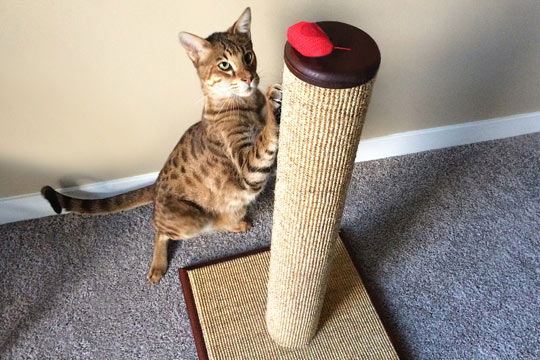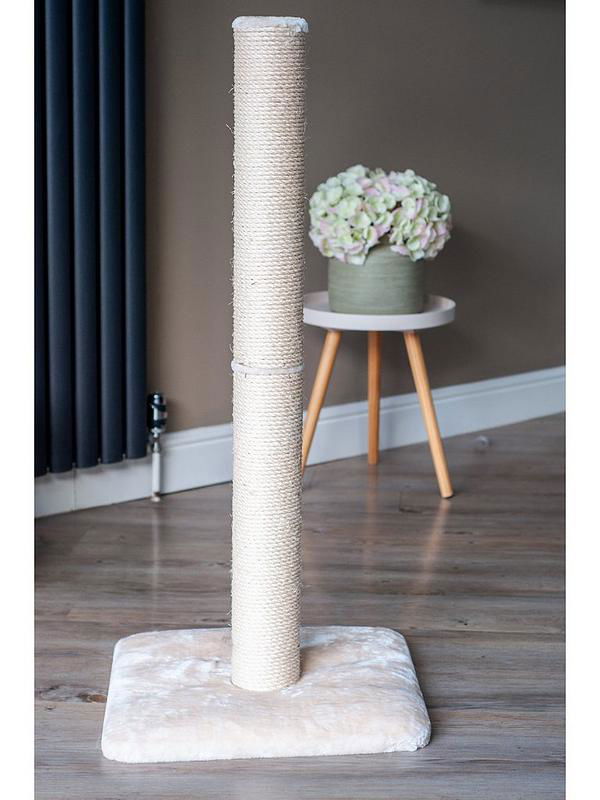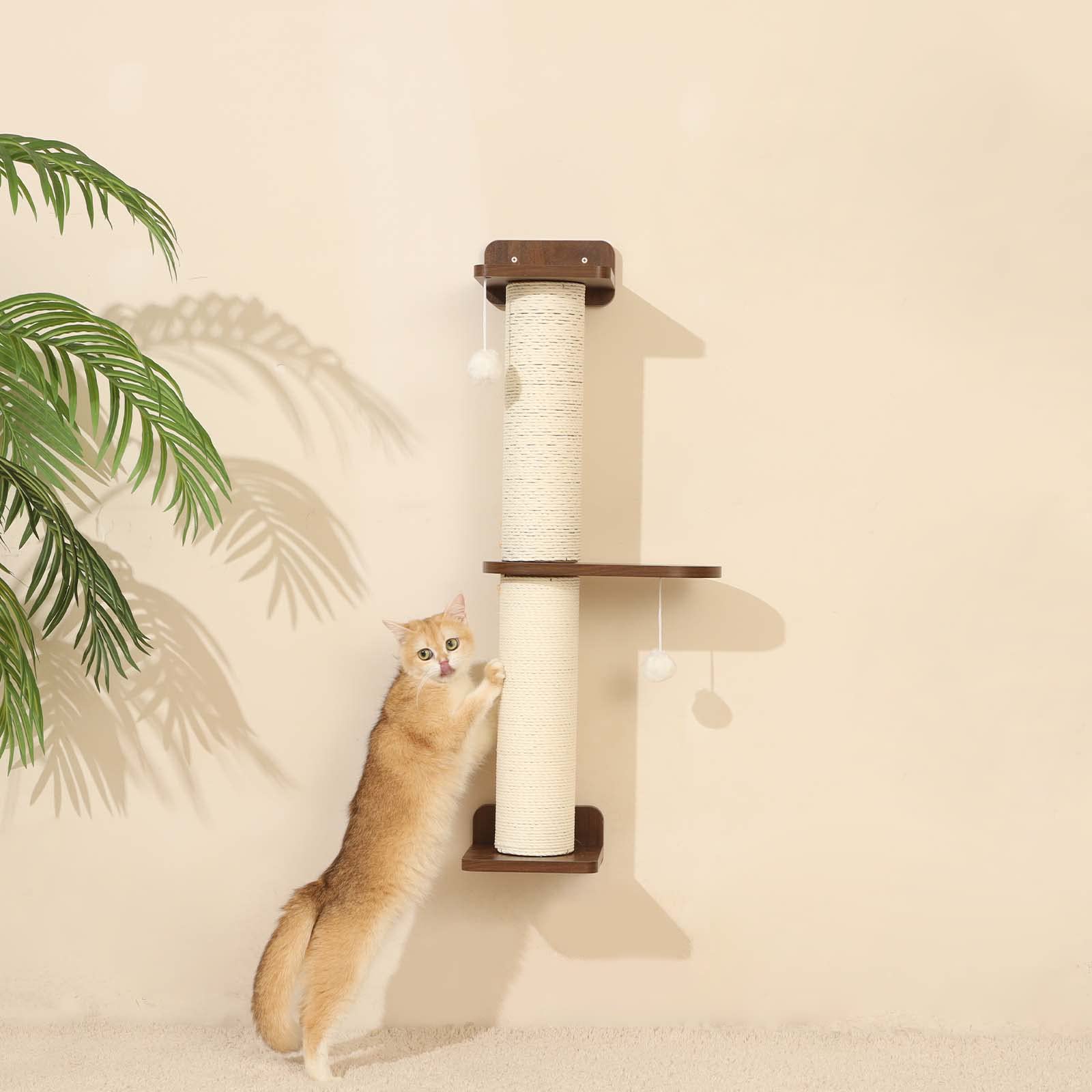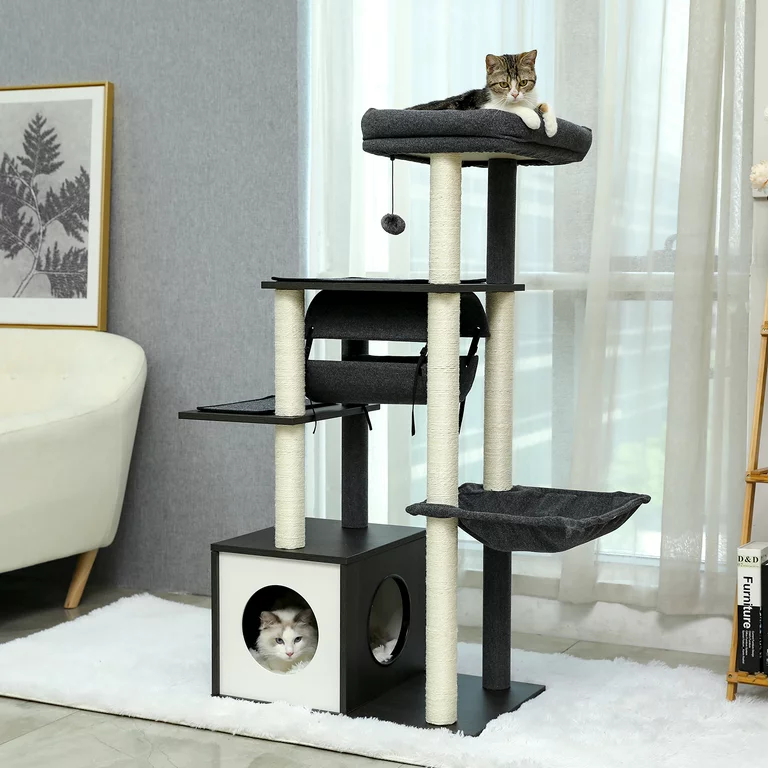
Cats have an inherent need to sharpen their claws, a behavior as fundamental to them as breathing, eating, and sleeping. However, this natural inclination can inadvertently lead to damage within our homes. To mitigate this, it's crucial to offer an appealing alternative for our feline companions. In the wild, cats sharpen their claws on trees, not only maintaining their "handy tool" but also marking their territory through scent glands in their paws. For indoor cats, providing a suitable scratching post can redirect their behavior and prevent destructive tendencies. This guide delves into the art of choosing and customizing scratching posts to align your beloved cat's instincts with your home environment.
The Significance of Design:
When selecting a scratching post, take your home's design into consideration. While pet stores might showcase an array of vibrant options, keep searching until you find one that seamlessly blends with your interior. Place the scratching post along the paths your cat frequents, such as routes to the kitchen, rather than relegating it to a remote corner. This strategic placement will naturally capture your cat's attention and promote consistent use.
Varieties of Scratching Posts:
1. Column Scratching Post:
This design closely emulates a tree trunk and proves highly effective. Typically consisting of a sisal-wrapped column on a sturdy base, it comes in various heights. Opt for a stable, tall column to replicate natural behavior. Measure your cat's length when fully stretched and use that measurement as a minimum height reference.

2. Corner Scratching Post:
Essential for homes with wallpapered walls and protruding corners, corner scratching posts capitalize on cats' preference for such surfaces. Install this post at a height matching your cat's full stretch for maximum benefit.
3. Wall-Mounted Scratching Post:
An excellent choice for welcoming your cat's entry, wall-mounted posts divert their attention from furniture and clothing. This secondary scratching spot is a win-win: your cat can express itself without harming your possessions, and you won't need to bend over to engage with your cat.

4. Cardboard Scratching Post:
Budget-friendly cardboard scratching posts, while less durable, can still fulfill their purpose. Avoid mounting them on walls as they won't last long in that position. These posts often come infused with catnip to enhance their appeal.
5. Combination Scratching Posts:
Compact living spaces can greatly benefit from multi-functional furniture like scratching post-houses. While these pieces take up room, they address various cat needs—claw upkeep, climbing, and hiding. Alternatively, consider custom furniture from specialized craftsmen for tailored solutions.
Ultimately, the journey to discovering the ideal scratching post involves a harmonious blend of practicality and aesthetics. Choosing a design that aligns with your cat's natural tendencies while seamlessly integrating into your decor is the key. By offering alternatives, you can deter undesirable scratching behaviors while enhancing your cat's environment. Armed with these considerations, you can create a balanced living space that caters to both your preferences and your feline companion's needs.
